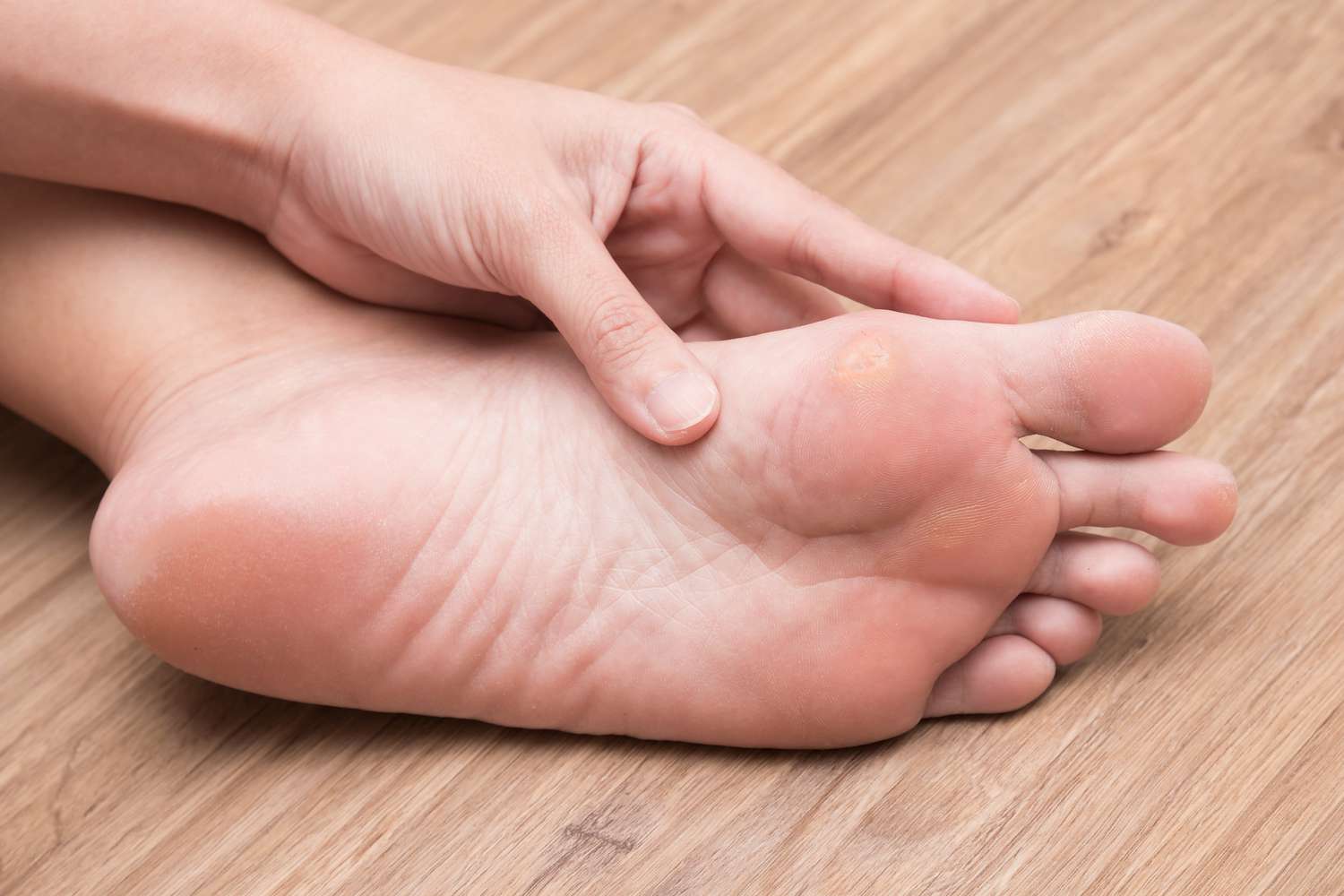Unveiling the Lump: Understanding and Treating Painful Bumps on the Bottom of Your Foot
Discovering a painful lump on the bottom of your foot can be unsettling. While it might send your mind racing with worries, the good news is, several common causes exist, many treatable with conservative measures. This comprehensive guide explores the various reasons behind these lumps, delves into effective treatment options, and provides a helpful FAQ section to address your concerns.
A Look at the Culprits
The underlying cause of a painful lump on the bottom of your foot can vary. Here’s a breakdown of some frequent culprits:
- Calluses and Corns: These thickened areas of skin develop due to repeated friction and pressure. Calluses are typically larger and spread over a wider area, while corns are smaller, have a central core, and often occur on pressure points between toes or on the balls of your feet.
- Plantar Warts: Caused by the human papillomavirus (HPV), plantar warts are small, fleshy bumps with a black pinpoint in the center. They typically appear on the weight-bearing areas of the foot.
- Plantar Fibromas: These are noncancerous growths that develop in the plantar fascia, the ligament that runs along the arch of your foot. They feel firm and movable under the skin and can cause pain, especially when wearing shoes.
- Bursitis: Bursae are fluid-filled sacs that cushion joints. Inflammation of these bursae, often due to overuse or friction, can lead to a painful lump on the bottom of your foot, particularly near the heel or ball of the foot.
- Haglund’s Deformity: This bony enlargement at the back of the heel can irritate a bursa, causing a painful lump and inflammation. Tight shoes or activities that put excessive stress on the heel can contribute to this condition.
- Cysts: Fluid-filled sacs that can develop anywhere on the body, including the sole of the foot. They are usually painless but can become uncomfortable if they grow large enough to press on nerves or surrounding tissues.
- Less Common Causes: In rare cases, a painful lump on the foot could be a sign of a more serious condition like a tumor or nerve issue. However, these are less likely causes.
Shining a Light on Diagnosis
While a visual examination by a podiatrist (foot doctor) is usually sufficient for diagnosis, in some cases, additional tests might be needed. These could include:
- X-rays: To visualize bones and identify any bony abnormalities.
- Ultrasound: To examine soft tissues like plantar fibromas or cysts.
- Biopsy: In rare instances, a small tissue sample might be taken for microscopic examination to rule out any underlying concerns.
Treatment Options for Relief
The treatment for a painful lump on the bottom of your foot depends on the underlying cause. Here’s a breakdown of common treatment approaches:
- Calluses and Corns: Removing pressure and friction is key. Consider wearing properly fitted shoes, using padding or corn protectors, and soaking your feet followed by gently buffing away the thickened skin with a pumice stone.
- Plantar Warts: Over-the-counter wart removers containing salicylic acid can be helpful. Freezing or laser therapy might be needed for more stubborn warts.
- Plantar Fibromas: Treatment often involves pain management with padding, shoe modifications, or orthotics. In some cases, steroid injections or even surgical removal might be necessary.
- Bursitis: Rest, ice therapy, anti-inflammatory medication, and immobilization with a walking boot can help reduce inflammation. In severe cases, cortisone injections might be needed.
- Haglund’s Deformity: Wearing shoes with a wider heel counter and padding the area can help alleviate pressure. In some cases, shoe inserts or physical therapy might be recommended. Surgery might be considered for persistent pain.
- Cysts: If a cyst is causing discomfort, draining it with a needle or surgical removal might be necessary.
Natural Remedies for Additional Comfort
While not a substitute for professional medical advice, some natural remedies can provide additional comfort alongside your prescribed treatment:
- Epsom Salt Soaks: Soaking your feet in warm Epsom salt baths can help reduce inflammation and promote relaxation.
- Apple Cider Vinegar: Applying diluted apple cider vinegar to the affected area (avoiding broken skin) might help soften calluses and corns. However, scientific evidence to support this use is limited.
- Tea Tree Oil: Tea tree oil has mild anti-inflammatory properties. Diluting it with a carrier oil like coconut oil and applying it topically might offer some relief, but further research is needed.

